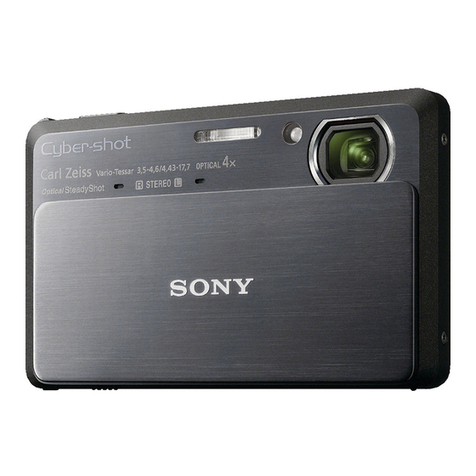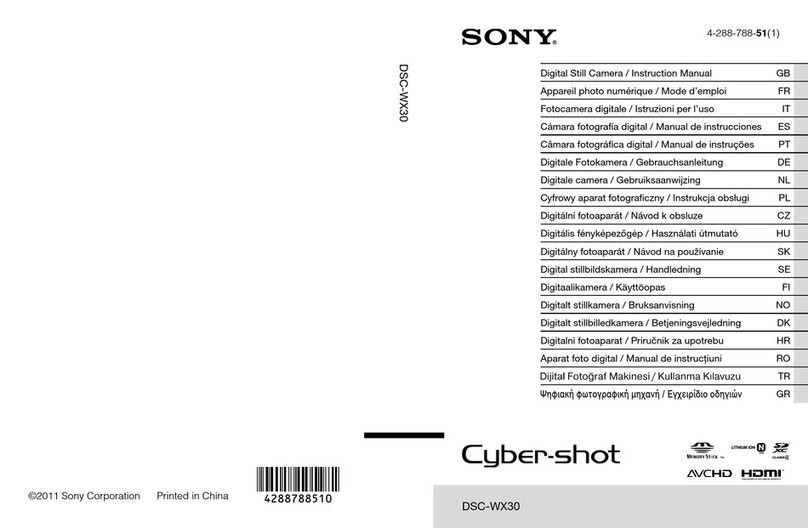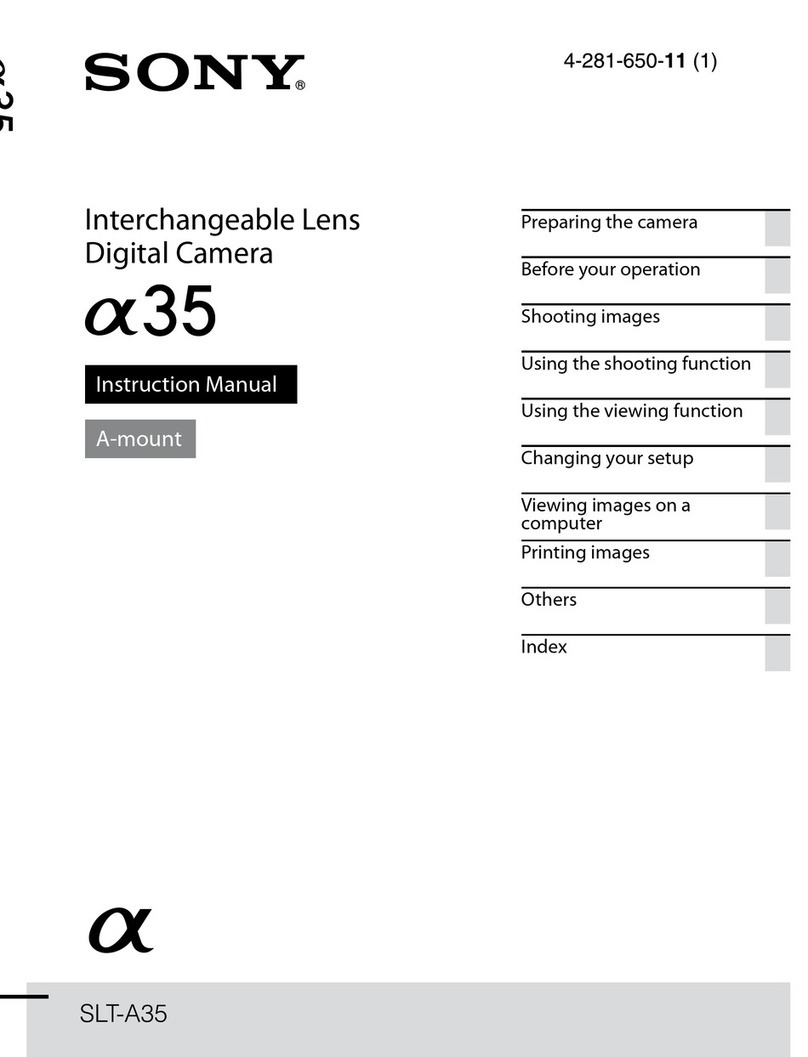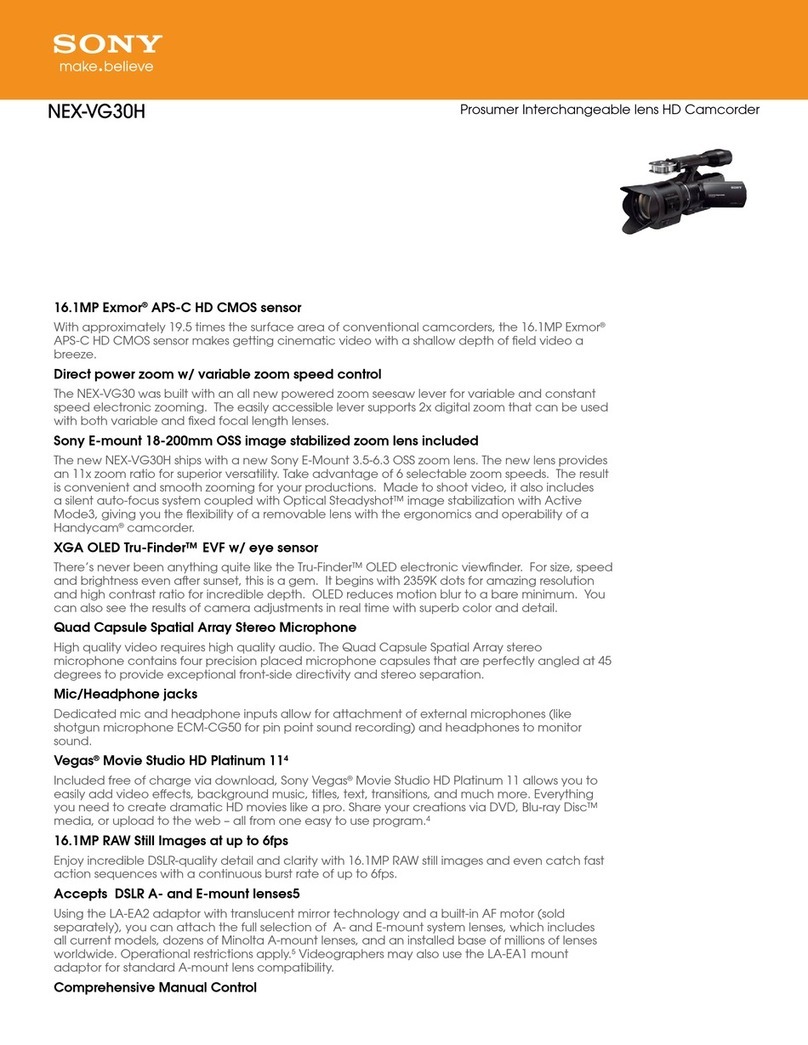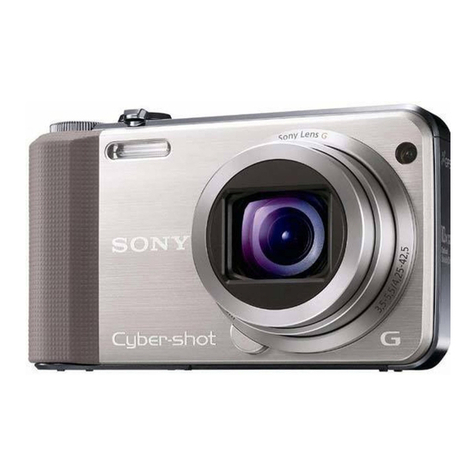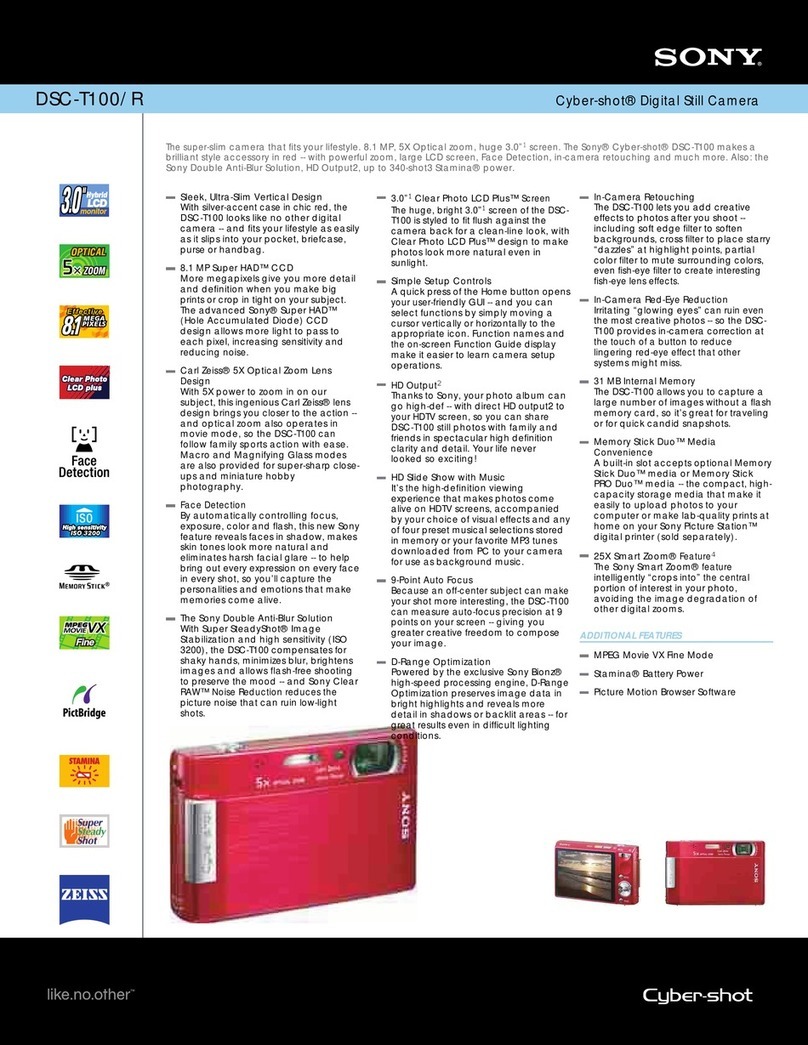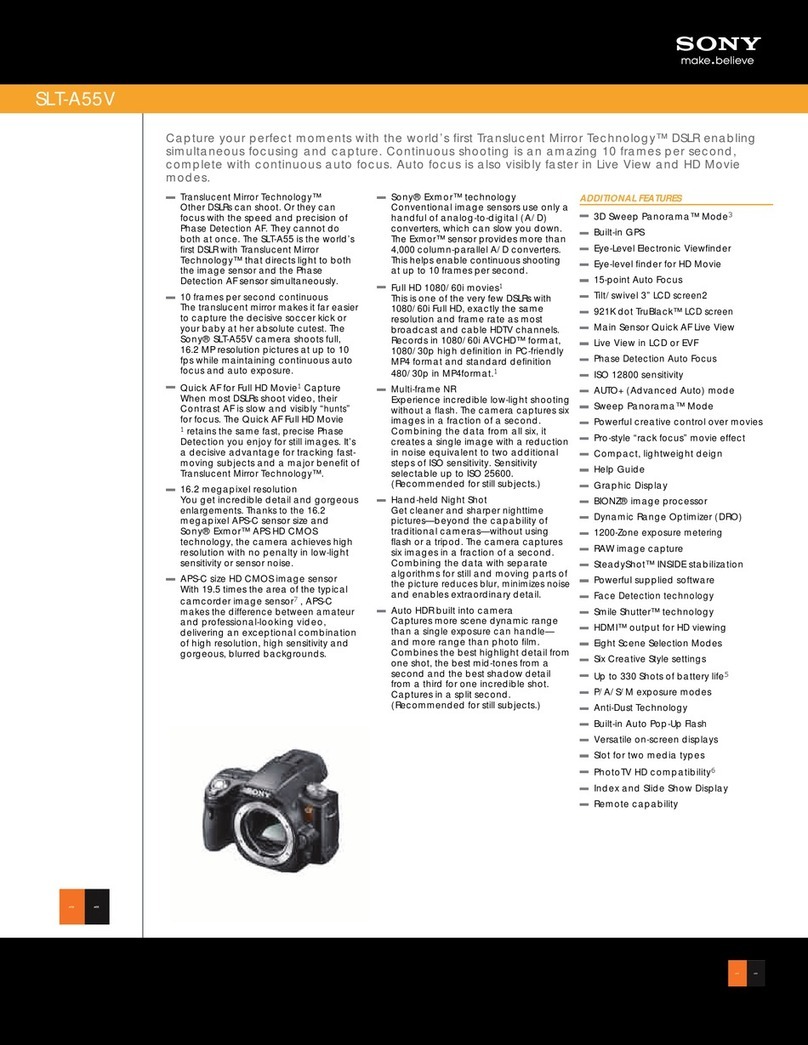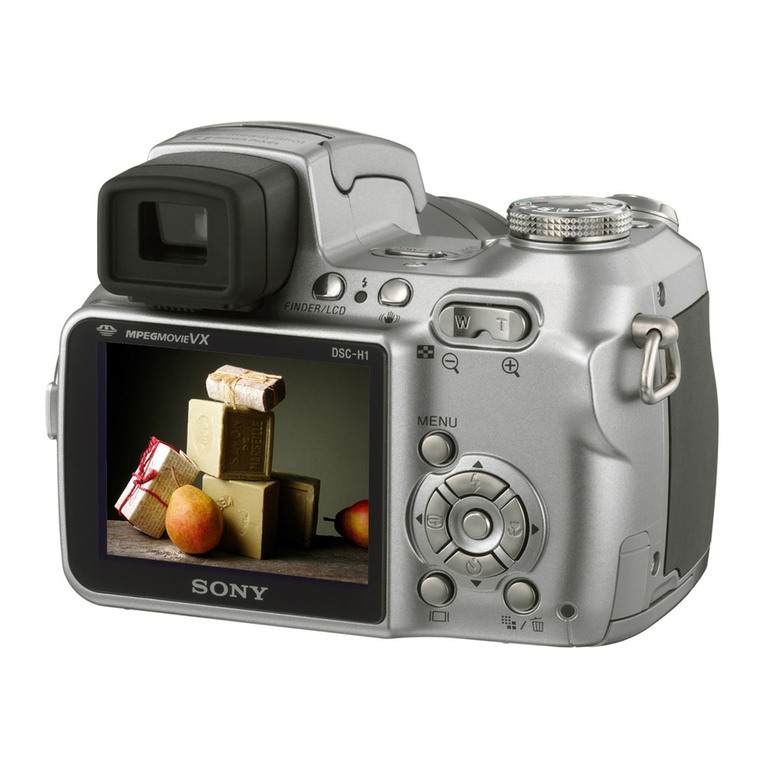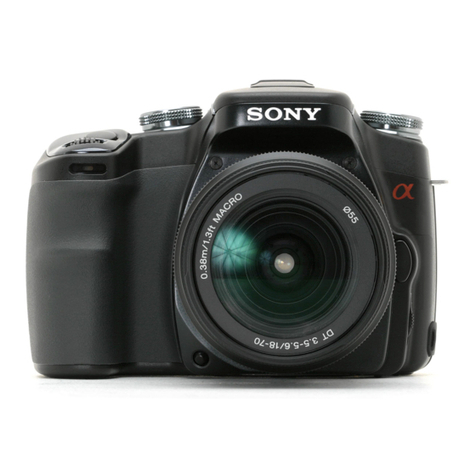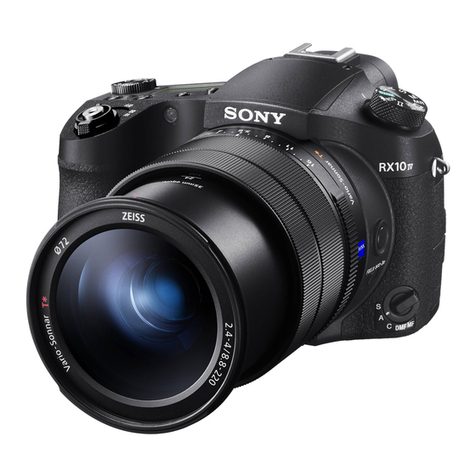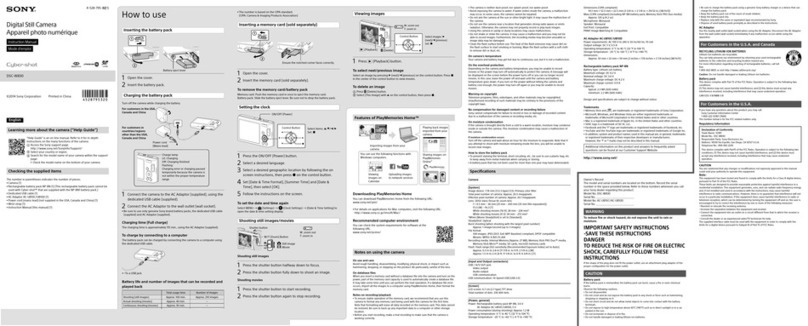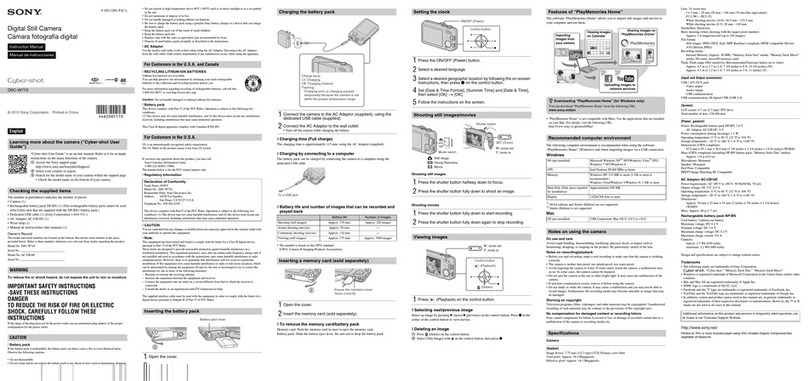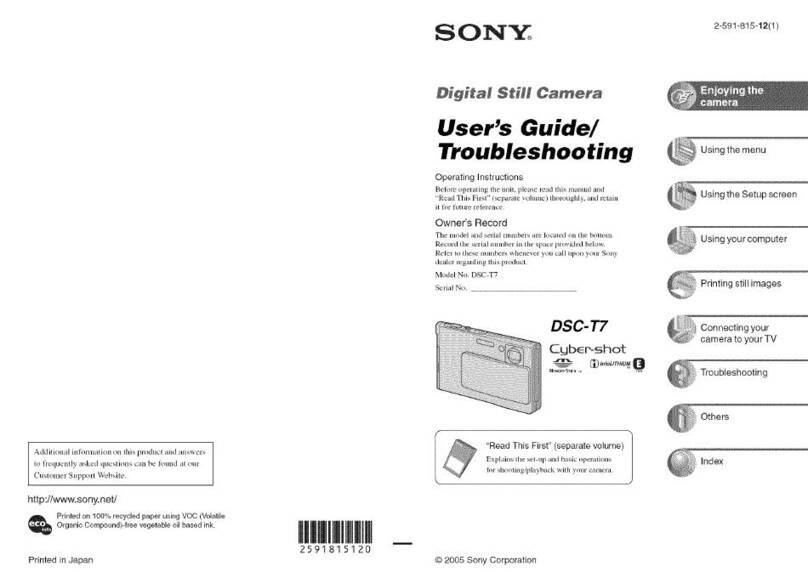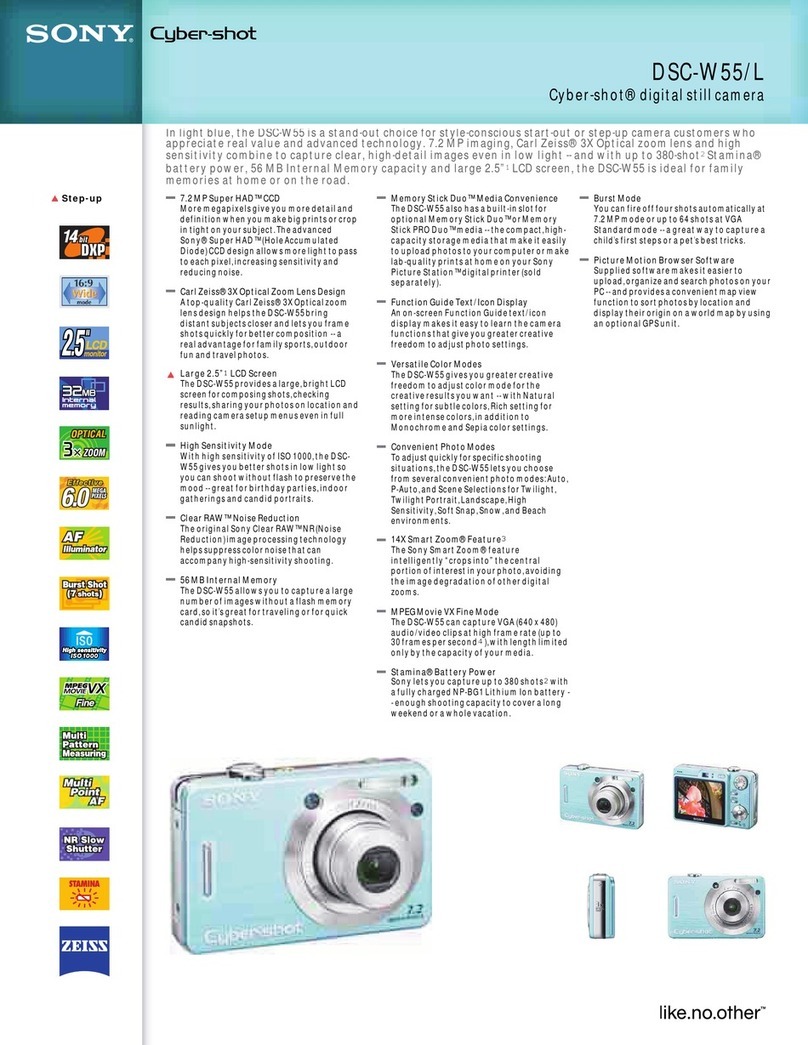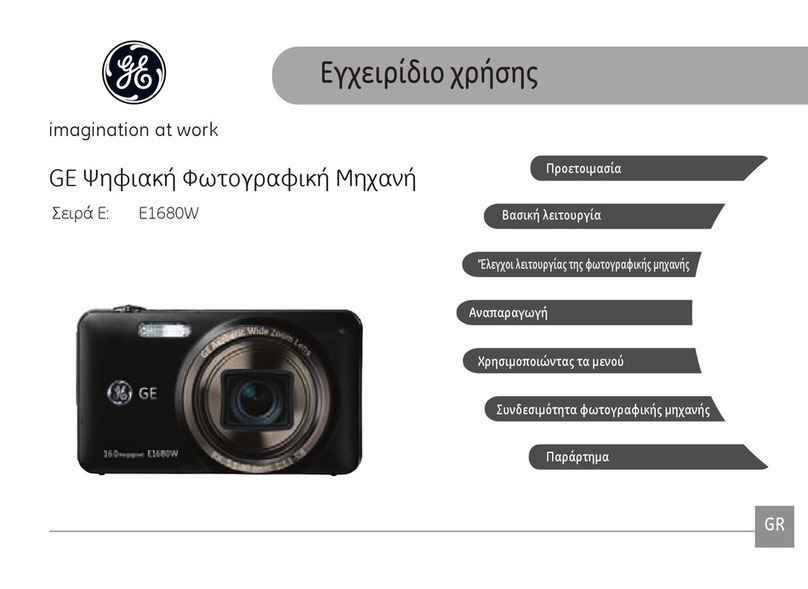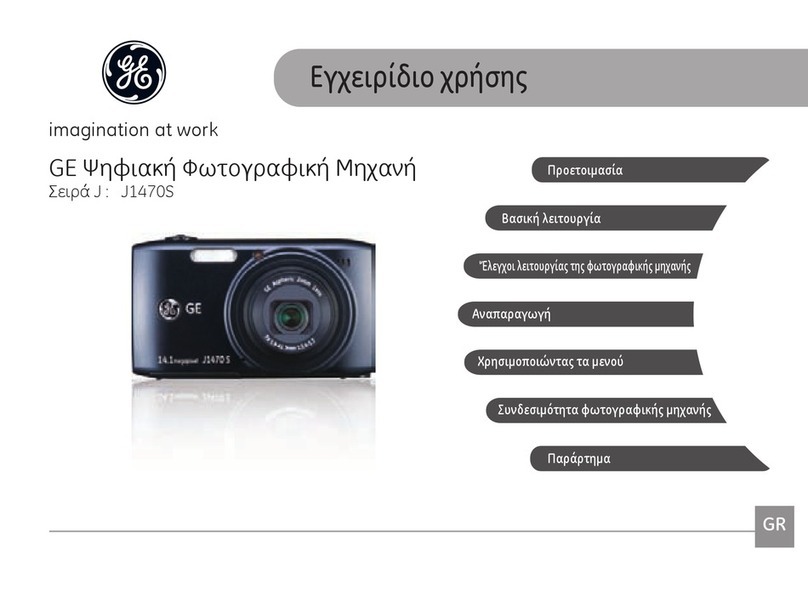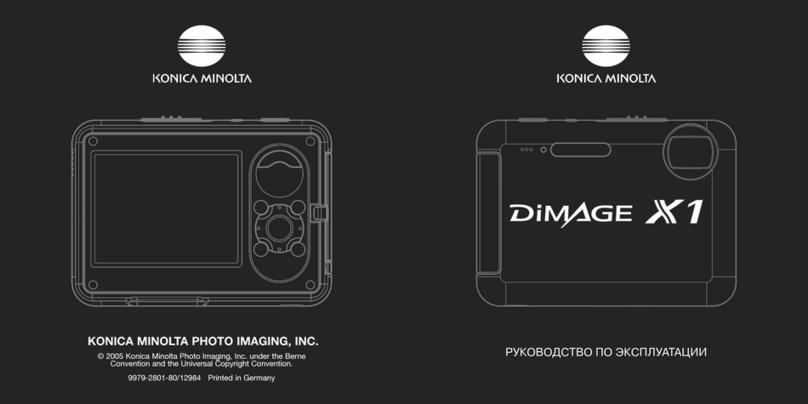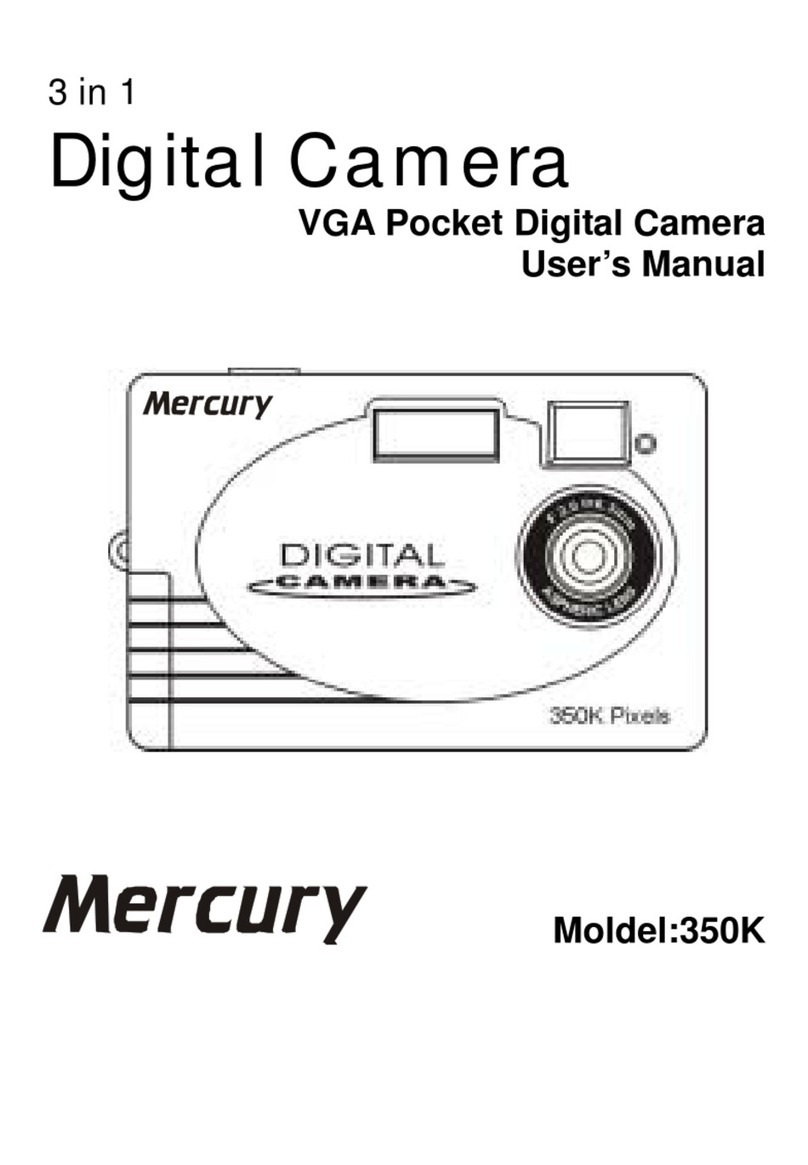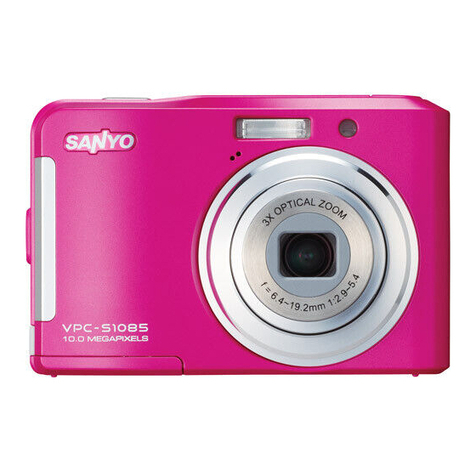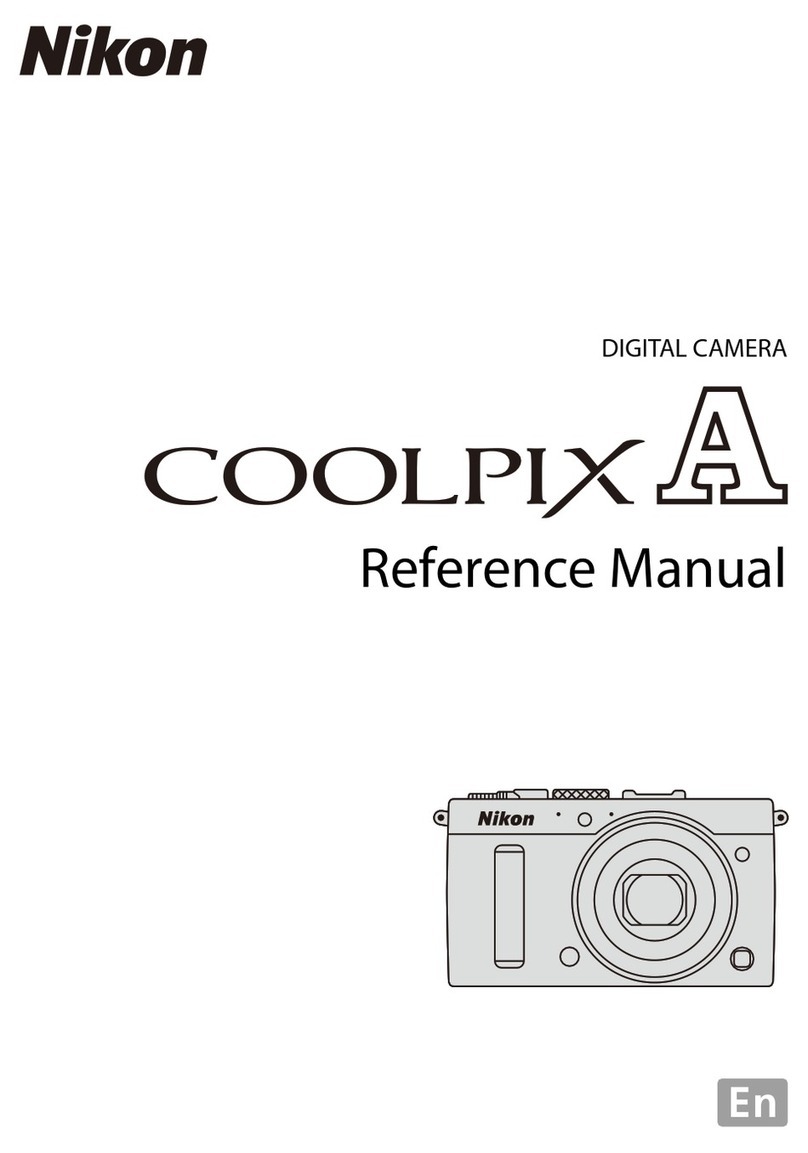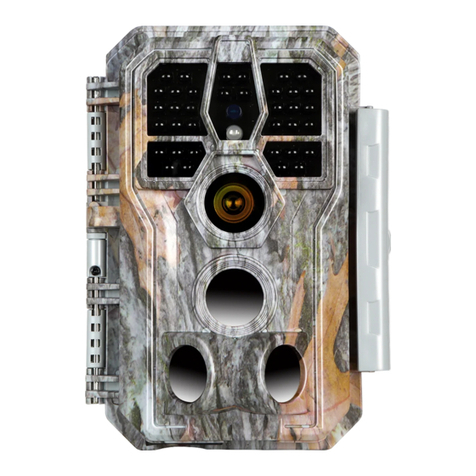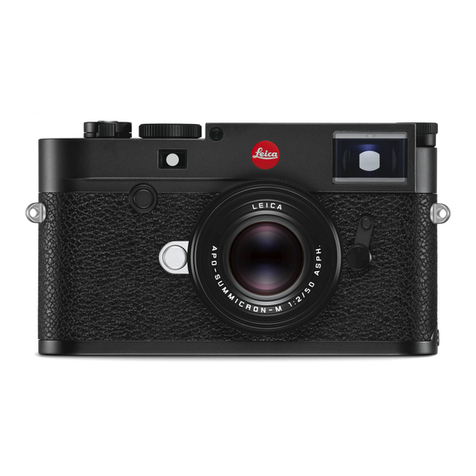1-2
ENGLISH JAPANESE
ENGLISH JAPANESE
DSC-T200_L2
1-3. PROCESS AFTER FIXING FLASH ERROR
When “FLASH error” (Self-diagnosis Code E : 91 : 01) occurs, to prevent any abnormal situation caused by high voltage, setting of the flash
is changed automatically to disabling charge and flash setting.
After fixing, this setting needs to be deactivated. Flash error code can be initialized by the operations on the HOME screen.
Method for Initializing the Flash Error Code
1-2-3. Self-diagnosis Code Table
C
C
E
E
E
E
E
E
E
E
E
Block
Function
13
32
61
61
62
62
62
62
62
91
92
Detailed
Code
01
01
00
10
02
10
11
12
20
01
00
Symptom/State
The internal memory has experienced a
format error.
“Memory Stick Duo” is unformatted.
“Memory Stick Duo” is broken.
“Memory Stick Duo” type error
The camera cannot read or write data
on the “Memory Stick Duo”.
Trouble with hardware
Difficult to adjust focus
(Cannot initialize focus)
Zoom operations fault
(Cannot initialize zoom lens.)
Abnormality of IC for steadyshot.
Lens initializing failure.
Lens overheating (PITCH).
Lens overheating (YAW).
Abnormality of thermistor.
Abnormality when flash is being charged.
Non-standard battery is used.
Self-diagnosis Code
Repaired by:
Correction
Format the internal memory.
Format the “Memory Stick Duo”.
Insert a new “Memory Stick Duo”.
Insert a supported “Memory Stick Duo”.
Turn the power off and on again, or taking out and inserting the
“Memory Stick Duo” several times.
Turn the power off and on again.
Retry turn the power on by the power switch. If it does not
recover, check the focus reset sensor of lens block (pin 6of
CN402 on the SY-182 board). If it is OK, check the focus motor
drive IC (IC401 on the SY-182 board).
Retry turn the power on by the power switch. Check the zoom
reset sensor of lens block (pin 9of CN402 on the SY-182
board), if zooming is performed when the zoom button is
operated. If it is OK, check the zoom motor drive IC (IC401 on
the SY-182 board).
Check or replacement of the IC for steadyshot (IC503 on the SY-
182 board).
Check or replacement of the IC for steadyshot (IC503 on the SY-
182 board).
Check the HALL element (PITCH) of optical image stabilizer
(pin ea, es of CN402 on the SY-182 board). If it is OK, check
PITCH angular velocity sensor (SE502 on the SY-182 board)
peripheral circuits.
Check the HALL element (YAW) of optical image stabilizer (pin
ed, ef of CN402 on the SY-182 board). If it is OK, check YAW
angular velocity sensor (SE501 on the SY-182 board) peripheral
circuits.
Check the OIS temp sensor of optical image stabilizer (pin wa of
CN402 on the SY-182 board).
Checking of flash unit or replacement of flash unit. (Note)
Use the compatible battery only.
Note: After repair, be sure to perform “1-3. PROCESS AFTER FIXING FLASH ERROR”.
Initializes the setting to the default setting. Even if you execute this function, the images
stored in the internal memory are retained.
1Touch [Initialize].
The message “Initialize all settings” appears.
2Touch [OK].
The settings are reset to the default setting.
To cancel the resetting
Touch [Cancel] or [BACK] in step 2.
•Make sure that the power is not disconnected during resetting.
Initialize
